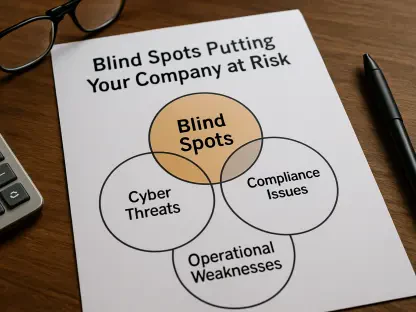In an era where artificial intelligence is reshaping the digital landscape, a sobering reality has emerged for businesses worldwide: the same technology driving innovation is also fueling unprecedented cyber threats. Lenovo’s latest insights, drawn from their third Work Reborn report, paint a stark picture of a cybersecurity environment struggling to keep pace with AI-powered attacks. IT leaders across industries are grappling with the limitations of traditional defenses, which are increasingly outmatched by the speed and sophistication of modern digital assaults. This growing disparity between evolving threats and outdated protections has sparked urgent conversations about the need for adaptive, technology-driven solutions. As AI continues to play a dual role—both as a business enabler and a security risk—the findings underscore a critical turning point for organizations aiming to safeguard their digital assets in an ever-shifting threat landscape.
Emerging Challenges in Cybersecurity
The Gap in Traditional Defenses
A striking revelation from Lenovo’s extensive survey of IT leaders highlights a pervasive sense of vulnerability in the face of AI-driven cyber threats. An overwhelming 65% of these professionals express concern that their existing security systems are ill-equipped to counter attacks powered by advanced algorithms, while a mere 31% feel confident in their preparedness. This significant gap underscores how traditional, reactive defenses—often reliant on perimeter-based strategies—are becoming obsolete against threats that adapt in real time. Rakshit Ghura, Vice President and General Manager of Digital Workplace Solutions at Lenovo, points out that AI has fundamentally altered the cybersecurity dynamic, tilting the balance toward attackers who leverage speed and innovation. The urgency to adopt more dynamic, intelligence-based approaches is clear, as clinging to outdated methods leaves organizations exposed to increasingly sophisticated digital attacks.
AI as a Double-Edged Sword
Beyond the inadequacy of current systems, AI itself presents a complex challenge by serving as both a tool for progress and a vector for risk. On one hand, it empowers businesses with efficiency and automation; on the other, it equips malicious actors with capabilities to launch intricate attacks like polymorphic malware and deepfake impersonations. Internally, the misuse of AI tools by employees poses a significant threat, with 70% of surveyed leaders identifying this as a high-impact concern. Additionally, over 60% worry about AI agents introducing novel risks, such as data leaks through generative platforms. Perhaps most alarming is the vulnerability of AI infrastructure itself—training models and datasets are now prime targets for manipulation or theft. This multifaceted danger illustrates a profound shift in the security landscape, where the very technology driving transformation also demands a complete rethinking of protective measures to address its inherent risks.
Strategic Responses to AI Threats
Shifting Toward AI-Driven Automation
As the cybersecurity industry grapples with hyper-agile threats, a notable trend is the pivot toward AI-driven automation to bolster defenses. Industry projections, supported by insights from leading analysts, suggest that by 2027, 90% of successful AI implementations in this field will prioritize task automation and process enhancement over replacing human roles. This shift reflects a broader recognition that proactive, adaptive solutions are essential to counter threats that strike across cloud systems, applications, and endpoints with unprecedented speed. Traditional defenses, often slow to respond, risk leaving organizations at a competitive disadvantage, as highlighted by expert warnings about the operational perils of inaction. Embracing automation not only addresses the immediacy of modern attacks but also aligns with the need for scalable, intelligent systems capable of evolving alongside the threat environment.
Lenovo’s Vision for Cyber Resilience
In response to these mounting challenges, Lenovo advocates for an AI-native cyber-resilience strategy designed to anticipate and neutralize threats before they fully emerge. This forward-thinking approach is embedded in the company’s latest AI PCs, which feature autonomous defense mechanisms, turning endpoints into self-protecting entities. Supported by a comprehensive edge-to-cloud platform, Lenovo’s Digital Workplace Solutions—enhanced by Gen-AI technology through initiatives like the Care of One platform and ThinkShield suite—aim to secure data and applications at every level. Ghura emphasizes that with AI tools often operating beyond IT oversight, and attackers exploiting unseen gaps, such advanced defenses are vital to transform vulnerabilities into strengths. This strategy represents a significant departure from conventional security models, focusing instead on hardware-level protection and dynamic adaptation to ensure resilience in an AI-dominated digital era.
Closing Thoughts on a New Security Era
Reflecting on Lenovo’s findings, it becomes evident that the rapid ascent of AI has redefined the boundaries of cybersecurity, exposing critical weaknesses in traditional IT defenses. The majority of industry leaders have acknowledged their unpreparedness for a threat landscape driven by external attacks, internal misuse, and exploited AI infrastructure. A pivotal shift toward automated, AI-powered solutions has begun to take shape, marking a departure from outdated methods that struggle against the adaptability of modern threats. Lenovo’s push for an AI-native resilience framework, with its emphasis on autonomous endpoints and comprehensive platforms, offers a glimpse into a more secure future. Moving forward, organizations should prioritize integrating such innovative strategies, investing in adaptive technologies, and fostering a culture of proactive risk management. By aligning with these advancements, businesses can better navigate the complexities of an AI-driven world, turning potential risks into opportunities for fortified digital protection.









